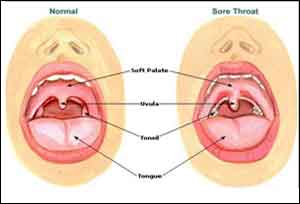- Home
- Editorial
- News
- Practice Guidelines
- Anesthesiology Guidelines
- Cancer Guidelines
- Cardiac Sciences Guidelines
- Critical Care Guidelines
- Dentistry Guidelines
- Dermatology Guidelines
- Diabetes and Endo Guidelines
- Diagnostics Guidelines
- ENT Guidelines
- Featured Practice Guidelines
- Gastroenterology Guidelines
- Geriatrics Guidelines
- Medicine Guidelines
- Nephrology Guidelines
- Neurosciences Guidelines
- Obs and Gynae Guidelines
- Ophthalmology Guidelines
- Orthopaedics Guidelines
- Paediatrics Guidelines
- Psychiatry Guidelines
- Pulmonology Guidelines
- Radiology Guidelines
- Surgery Guidelines
- Urology Guidelines
Quick, cost-effective method to identify throat infections in offing

Indian scientists have developed the new sensor-based technique for detecting the presence of S. pyogenes bacteria, the most common cause of throat infections. It is claimed to be a quick and cost-effective.
The device, a DNA chip-based sensor, consists of a carbon electrode embedded with gold nanoparticles to improve electronic properties. Many small-sized DNA probes are located on the modified chip. They attach themselves to the target DNA samples of bacteria taken from throat swabs of the patient.
The new sensor has been found to be better than earlier reported sensors due to its ability to pick up bacterial DNA even if present in small numbers, within 30 minutes. It correctly distinguishes S. pyogenes from other bacteria, according to the study published in International Journal of Biological Macromolecules.
“The aim was to develop a rapid, accurate, sensitive, specific and cost-effective method for detection of S. pyogenes. The current methods of detection S. pyogenes infection are culture test, biochemical assays, polymerase chain reaction, genetic markers. And these methods are time consuming, expensive, are unable to pick up the bacteria if present in small numbers and may even wrongly identify other bacteria as S. pyogenes,” Professor Ashok Kumar from the Institute of Genomics and Integrative Biology, who led the research, told India Science Wire.
Based on this technique, he said, several other infection-causing microbes can be identified to prevent the disease by taking medical treatment at the early stage of infection.
The most common cause of throat infections in humans is S. pyogenes bacteria. If left untreated it may lead to damage of human heart valves resulting in a severe form of rheumatic heart disease. Early diagnosis can prevent damage of human heart valves by taking timely and correct medical care.
The team of researchers included Swati Singh and Ankur Kaushal from the CSIR-Institute of Genomics and Integrative Biology, Delhi, and Dr. Shashi Khare from the National Centre for Disease Control, Delhi.
(The article was first published in India Science Wire)

Disclaimer: This site is primarily intended for healthcare professionals. Any content/information on this website does not replace the advice of medical and/or health professionals and should not be construed as medical/diagnostic advice/endorsement or prescription. Use of this site is subject to our terms of use, privacy policy, advertisement policy. © 2020 Minerva Medical Treatment Pvt Ltd